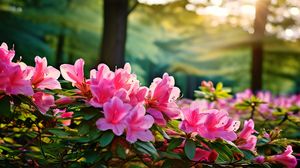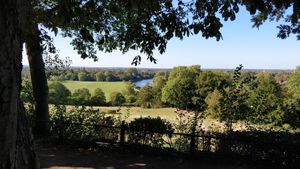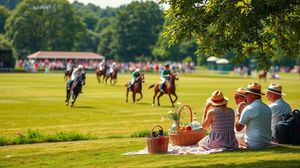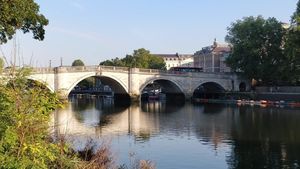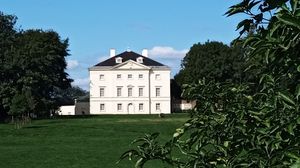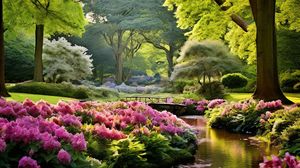
Isabella Plantation is a stunning woodland garden located within Richmond Park, offering a tranquil escape from the hustle and bustle of London. Renowned for its abundant and diverse plant life, the garden is particularly famous for its spectacular displays of azaleas and rhododendrons, which create a vibrant palette of colors during the spring months.
The plantation spans over 40 acres and is part of Richmond Park's 2,500 acres of Royal parkland, making it a haven for both plant enthusiasts and anyone seeking a serene nature retreat. Originally planted in the 1830s, Isabella Plantation was developed into its current form after World War II, illustrating the resilience and care involved in its cultivation.
A unique feature of Isabella Plantation is its lack of manicured flowerbeds, with its plants seamlessly integrated into the natural woodland setting. This approach showcases the beauty of wild, unrestrained growth, a refreshing contrast to traditional botanical gardens. Visitors can enjoy meandering paths that offer surprise vistas and hidden nooks filled with birdlife.
The garden's soil is predominantly acidic, making it an ideal growing condition for the collection of azaleas, camellias, and magnolias. This natural advantage has been carefully utilized, resulting in a breathtaking spring display that is eagerly anticipated each year.
One of the quirky aspects of Isabella Plantation is the presence of the Bog Garden, a thoughtfully designed area that is teeming with wetland plants such as large-leaved gunneras, adding a touch of the exotic to this quintessentially English garden. The garden's careful design incorporates a series of ponds and streams, helping sustain its lush environment.
Aside from its floral beauty, Isabella Plantation is also dedicated to biodiversity and conservation efforts, providing habitats for various species of birds, insects, and mammals. It serves as an educational resource as well, facilitating understanding and appreciation of woodland ecosystems and conservation practices.
Visiting Isabella Plantation offers a peaceful yet invigorating experience, with its riot of colors, rich biodiversity, and the harmonious coexistence of natural beauty and careful horticultural design. It's a place that beckons nature lovers and those simply in search of a picturesque escape within one of London's most beloved green spaces.

Making the Most of Your Visit:
When visiting Isabella Plantation, try to explore it during different seasons if you can. While spring is the most popular time with its azaleas and rhododendrons in full bloom, coming in autumn will reward you with beautiful foliage colors and a quieter experience.
Bring a pair of binoculars or a zoom lens for your camera, especially if you're a bird enthusiast. The plantation is a haven for birdlife, and you might spot species like woodpeckers, nuthatches, or kingfishers around the ponds.
If you're planning a picnic, remember that the plantation itself has a strict no-picnic policy to preserve the natural environment. However, you can enjoy your picnic in many lovely spots within the larger Richmond Park, just outside the plantation.
Wear comfortable walking shoes, as the paths through Isabella Plantation can be uneven and a bit muddy, especially after rain. This will help you explore every nook and cranny without worrying about where you step.
Don't miss the Bog Garden area. Besides the impressive gunneras, it has a stunning collection of wetland plants that thrive in the soggy soil, offering a lush and somewhat exotic contrast to the standard woodland scenery.

Visiting Times & Costs:
Isabella Plantation is open to the public throughout the year, ensuring visitors can appreciate its beauty across different seasons. It is free to enter, allowing everyone to enjoy the natural splendor without any cost.
Opening hours for Isabella Plantation typically follow the opening times of Richmond Park, which usually open at 7:00 AM and close at dusk, but it is recommended to check for any seasonal variations.
Visitors should be aware that while the plantation features well-maintained paths, some areas may be challenging for wheelchair users and those with limited mobility due to uneven terrain and natural paths. However, some pathways are accessible, and efforts are made to accommodate all visitors as much as possible.

Address & Map:

Nearby:
